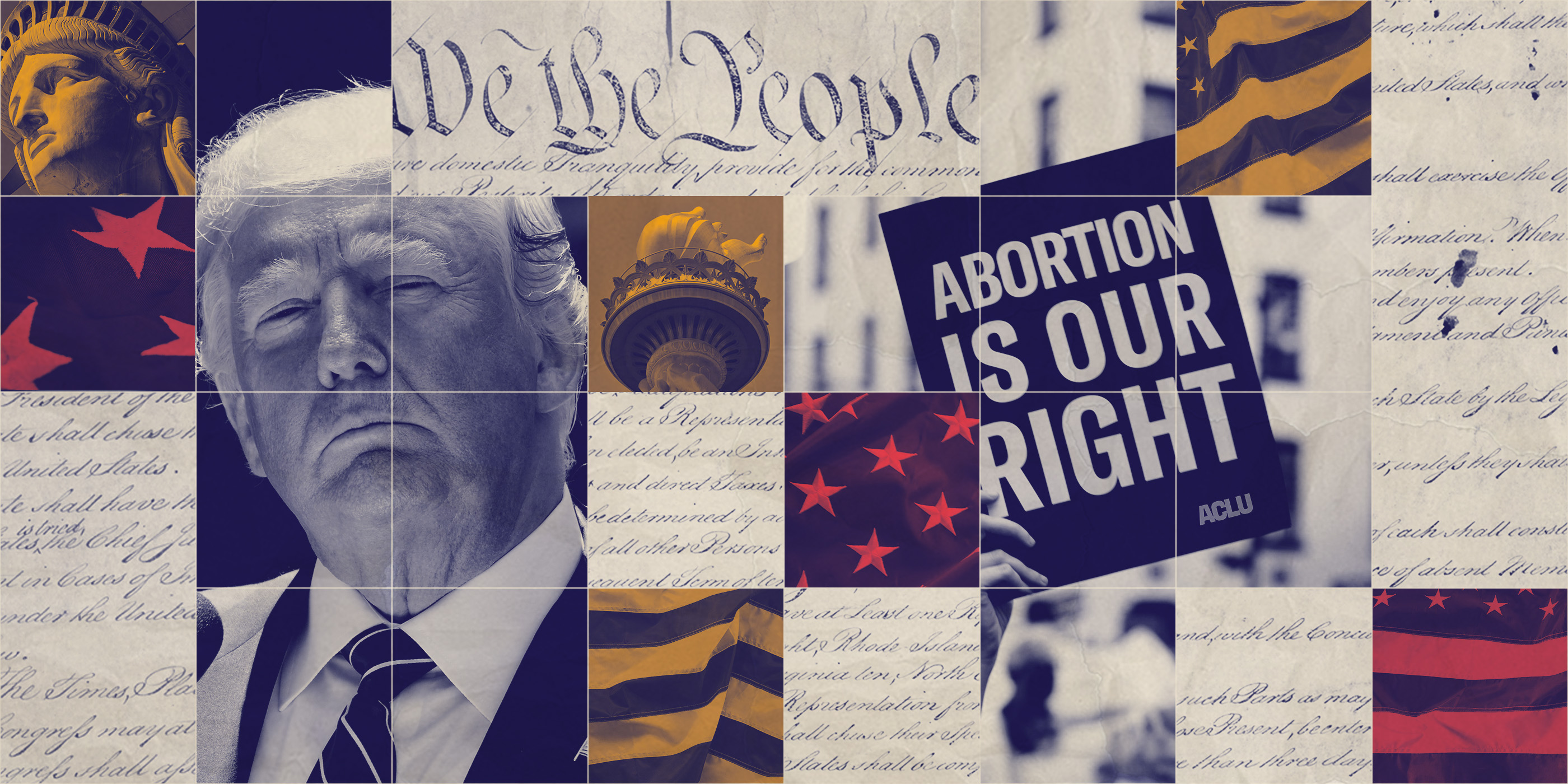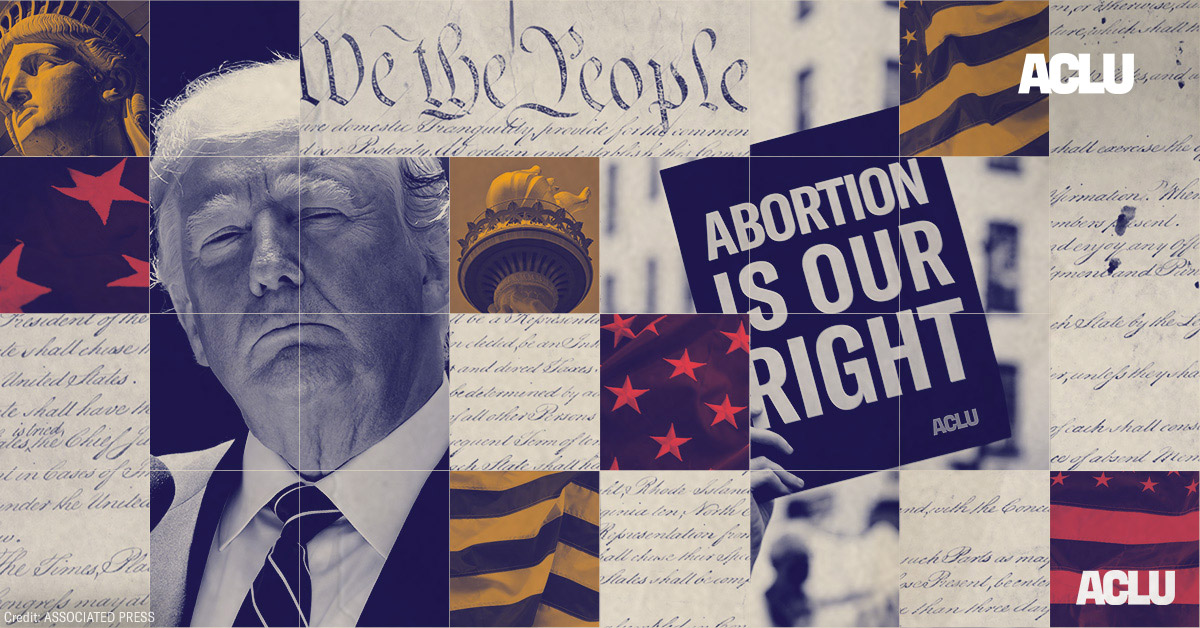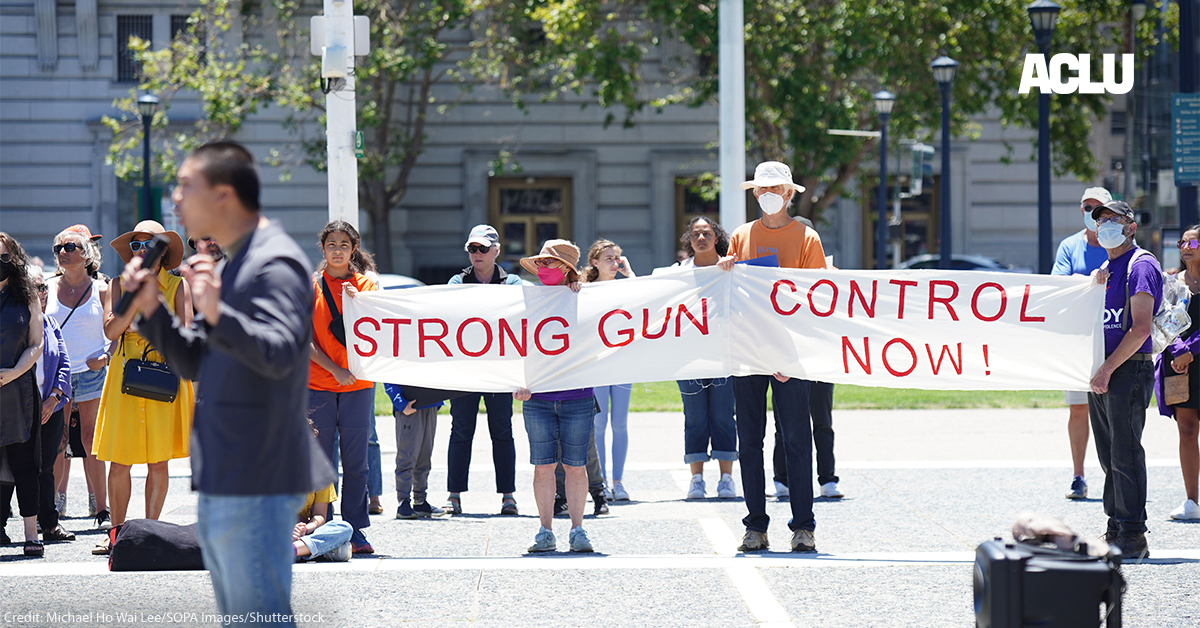Today marks two years since Roe v. Wade was overturned, wiping out federal protections for abortion rights. This decision was a direct result of Donald Trump’s actions. In 2016, during his presidential campaign, he vowed to appoint Supreme Court justices who would overturn Roe. Over the course of his presidency, he did just that – appointing the three Supreme Court justices who later voted to reverse decades of protections for abortion rights.
Trump’s devastating legacy is clear. Today, anti-abortion politicians in 17 states have banned abortion, leaving millions of people without access to care. If Trump resumes office, this will only be the beginning. Trump’s advisors are already plotting to twist a law from 1873 to effectively ban abortion in all 50 states, even where abortion is protected under state law. Trump won’t stop at abortion rights – he will seek to limit contraception access, too. At the ACLU we’re gearing up to fight in courts and at every level of government to block the Trump administration’s relentless assault on reproductive rights. Learn more in our breakdown:
Trump on Abortion
The Facts: In an attempt to deceive voters – who overwhelmingly oppose restricting abortion access – Trump has waffled on whether he’d encourage Congress to pass a new law to ban abortion nationwide. He doesn’t need Congress, however, to attempt to wreak havoc on our access to abortion. According to Trump’s anti-abortion strategists, a new Trump administration can bypass Congress and use a 150-year-old law called the Comstock Act to effectively ban abortion nationwide. The Comstock Act is an 1873 anti-obscenity statute that regulates the use of the mail and common carriers concerning sending and receiving anything that is “indecent, filthy, or vile” or “intended for producing abortion.” Even though this law has long been understood not to apply to the lawful abortion, Trump’s advisors plan to misuse this antiquated law to effectively ban abortion nationwide.
In addition to weaponizing the Comstock Act to imperil abortion access, a second Trump administration would respond to calls from his allies to withdraw the Food and Drug Administration’s (FDA) approval of mifepristone, a safe and effective medication used in most abortions and miscarriage care in the U.S. Trump has also admitted that he has a plan to restrict access to contraception.
Why It Matters: Donald Trump made it possible for anti-abortion extremists to deny people the right to make decisions about their bodies and their lives. Since the justices he appointed overturned Roe, 17 states have banned abortion. Today, millions of people of reproductive age live hundreds of miles from the closest abortion provider, forcing more than 171,000 persons to travel outside of their home state to secure access to abortion care in 2023 alone. Many others are not able to get the care they need at all. In spite of the fact that Trump’s anti-abortion policies run counter to the will of the public, we know that, should Trump secure a second term, his administration will not hesitate to further decimate reproductive rights and try to ban abortion nationwide.
How We Got Here: When he was president, Trump not only stacked the Supreme Court with justices who would later overturn Roe, but he decimated access to birth control and family planning services for people living on low incomes. Additionally, Trump’s allies in Congress have repeatedly attempted to dismantle federal programs, like the Affordable Care Act, that support reproductive health care access, or to block laws that would codify the right to contraception or protect access to IVF.
Recently, Trump attempted to downplay his plans to further ban abortion and other critical reproductive health care to avoid alienating voters. In fact, Jonathan Mitchell, Trump’s lawyer before the Supreme Court, admitted to The New York Times that he hopes Trump does not mention his intentions to weaponize the Comstock Act to ban abortion nationwide until after the election. Yet these attempts to pull the wool over the public’s eyes cannot conceal how Trump’s unguarded statements, his allies’ public playbook and admissions, and, most importantly, his prior actions have already made his anti-abortion and anti-reproductive health stance clear.
Our Roadmap: The ACLU is fighting for our right to abortion and other reproductive health care in court, in Congress, in the states, and at the polls. If Trump is re-elected, we’ll challenge his administration’s dangerous attacks on reproductive freedom, including any attempts to weaponize the Comstock Act to ban abortion nationwide or to take medication abortion off the shelves.
Similarly, in Congress and in the courts, we’ll work to protect access to birth control and to fight any attempt to make it more difficult for people to access contraception and family planning services. Also, the ACLU and its affiliates are actively engaged in 2024 ballot initiative efforts to enshrine abortion rights in state constitutions.
What Our Experts Say: “Overturning Roe was not the last stop for Trump and his anti-abortion allies. They are quietly plotting to ban abortion nationwide using a law from 1873 and will not hesitate to try to do so if Trump returns to the White House. We will continue our work to ensure that Americans know the truth, and to thwart Trump’s attempts to pull the wool over the public’s eyes. If he returns to office, we will be there every step of the way to expose his plans, galvanize efforts to stop him, and to fight him in court whenever possible.” – Jennifer Dalven, director of the ACLU Reproductive Freedom Project
What You Can Do Today: Politicians are relentless in their attacks on reproductive freedom, but a majority of this country believes that people must have the power to make personal decisions during pregnancy. Join us in this fight to expand and restore our rights by urging legislators to pass federal legislation that safeguards our reproductive freedom – including abortion, birth control, and IVF care.
Date
Monday, June 24, 2024 - 5:00pmFeatured image





